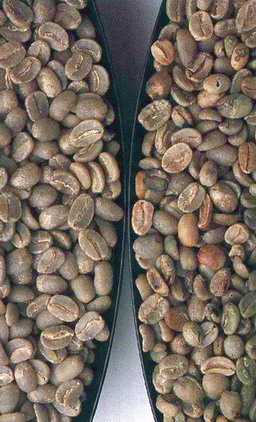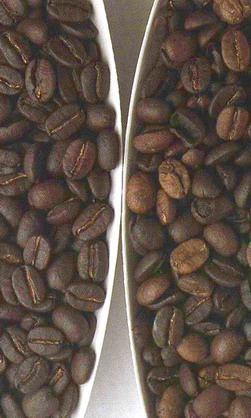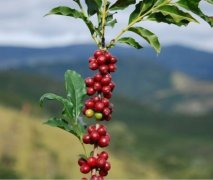Coffee basics Common sense "good coffee" should be the standard
Everyone's taste is different, and the taste of coffee varies from person to person. How can we say what is good and what is bad? How to judge? The taste of coffee is determined by the combination of sour and bitter taste, aroma concentration, astringent taste and mellow thickness, sometimes plus wine taste, mildew taste, fermentation taste and so on. For a person who doesn't like sour coffee, even a cup of sour coffee is not good for it. Therefore, we have a clear score that the "good and bad" of coffee is a matter of personal preference and cannot be evaluated objectively, but there is a criterion for judging and distinguishing the "good and bad" of coffee.
What is a good cup of coffee? There should be the following criteria:
1. For the flawless coffee raw beans, it is necessary to pick out the defective coffee beans such as bad beans, moldy beans, fermented beans, worm-eaten beans, and even immature beans, which will destroy the original taste of coffee, that is, to completely deal with the selection process of raw beans. Expensive beans do not necessarily represent good beans, but good beans require a certain selection process. As the so-called "hand-selected first choice", the handling of raw coffee beans requires experienced hands.

Good raw beans and bad raw beans must be picked out from bad beans, moldy beans and worm-eaten beans.
two。 Freshly roasted coffee. After a proper roasting process to make the flavor of the coffee beans appear perfectly, the raw coffee beans are stored in the correct way of preservation within the period of validity, usually two weeks.

The color of baked beans should be uniform between good baked beans and bad baked beans.
3. Freshly ground coffee.
4. Freshly brewed coffee.
In other words, a "good cup of coffee" should be "selected flawless coffee raw beans, after proper roasting, fresh grinding, brewing, the correct extraction of flavor" coffee.
Important Notice :
前街咖啡 FrontStreet Coffee has moved to new addredd:
FrontStreet Coffee Address: 315,Donghua East Road,GuangZhou
Tel:020 38364473
- Prev

Sharing the method of making perfect ice droplets of high-quality coffee
Ice drop coffee is said to have originated in the Netherlands and is one of the few coffees extracted with cold water. Compared with hot water extraction at high temperature, cold extraction at low temperature has relatively less acidity and caffeine release, and is conducive to the preservation of volatile aroma. Also because of low-temperature extraction, the production process takes a long time and usually takes several hours, so luck is also important to order iced coffee. How to be one
- Next

10 steps for testing high-quality coffee
1. Prepare a little (about 10 grams) freshly roasted and immediately ground coffee in a small cup. 2. Smell it and see its dry fragrance. 3. Pour in the hot water of about 95 degrees Celsius. Do not boil and immediately pour it into the coffee powder. Let it stand for about half a minute and then pour into the coffee powder after the temperature drops slightly. 4. Smell the aroma coming from the rising steam. 5. Place this cup of sample for three to five minutes
Related
- Beginners will see the "Coffee pull flower" guide!
- What is the difference between ice blog purified milk and ordinary milk coffee?
- Why is the Philippines the largest producer of crops in Liberia?
- For coffee extraction, should the fine powder be retained?
- How does extracted espresso fill pressed powder? How much strength does it take to press the powder?
- How to make jasmine cold extract coffee? Is the jasmine + latte good?
- Will this little toy really make the coffee taste better? How does Lily Drip affect coffee extraction?
- Will the action of slapping the filter cup also affect coffee extraction?
- What's the difference between powder-to-water ratio and powder-to-liquid ratio?
- What is the Ethiopian local species? What does it have to do with Heirloom native species?

